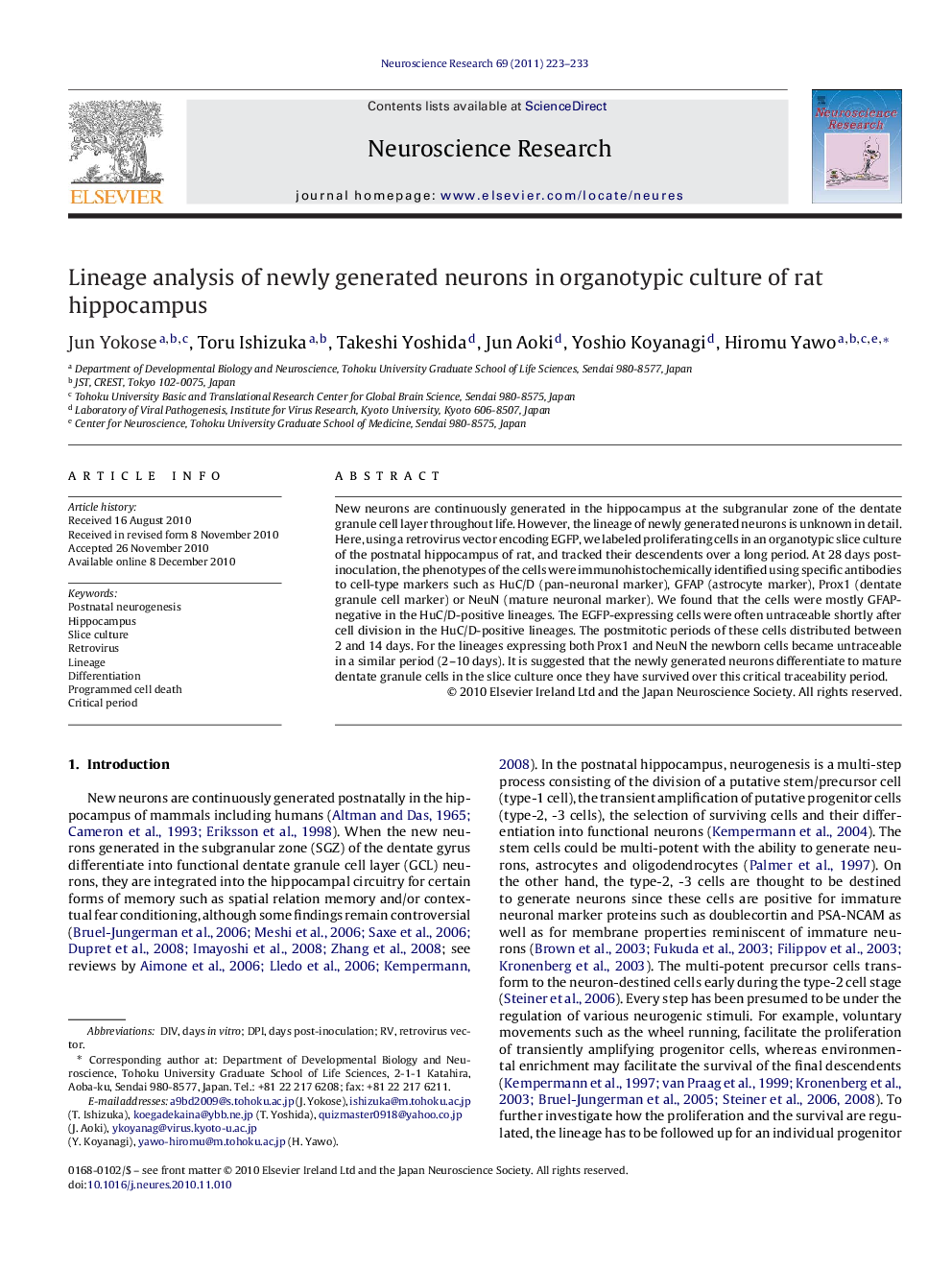| Article ID | Journal | Published Year | Pages | File Type |
|---|---|---|---|---|
| 4351599 | Neuroscience Research | 2011 | 11 Pages |
New neurons are continuously generated in the hippocampus at the subgranular zone of the dentate granule cell layer throughout life. However, the lineage of newly generated neurons is unknown in detail. Here, using a retrovirus vector encoding EGFP, we labeled proliferating cells in an organotypic slice culture of the postnatal hippocampus of rat, and tracked their descendents over a long period. At 28 days post-inoculation, the phenotypes of the cells were immunohistochemically identified using specific antibodies to cell-type markers such as HuC/D (pan-neuronal marker), GFAP (astrocyte marker), Prox1 (dentate granule cell marker) or NeuN (mature neuronal marker). We found that the cells were mostly GFAP-negative in the HuC/D-positive lineages. The EGFP-expressing cells were often untraceable shortly after cell division in the HuC/D-positive lineages. The postmitotic periods of these cells distributed between 2 and 14 days. For the lineages expressing both Prox1 and NeuN the newborn cells became untraceable in a similar period (2–10 days). It is suggested that the newly generated neurons differentiate to mature dentate granule cells in the slice culture once they have survived over this critical traceability period.
Research highlights▶ Newborn cells were tracked as lineages in the slice culture of hippocampus. ▶ The cells were mostly GFAP-negative in the HuC/D-positive lineages. ▶ The newborn cells were often untraceable in neuron-generating lineages. ▶ The postmitotic periods of the untraceable cells distributed between 2 and 14 days. ▶ The newborn neurons differentiate to mature once survived over some period.
